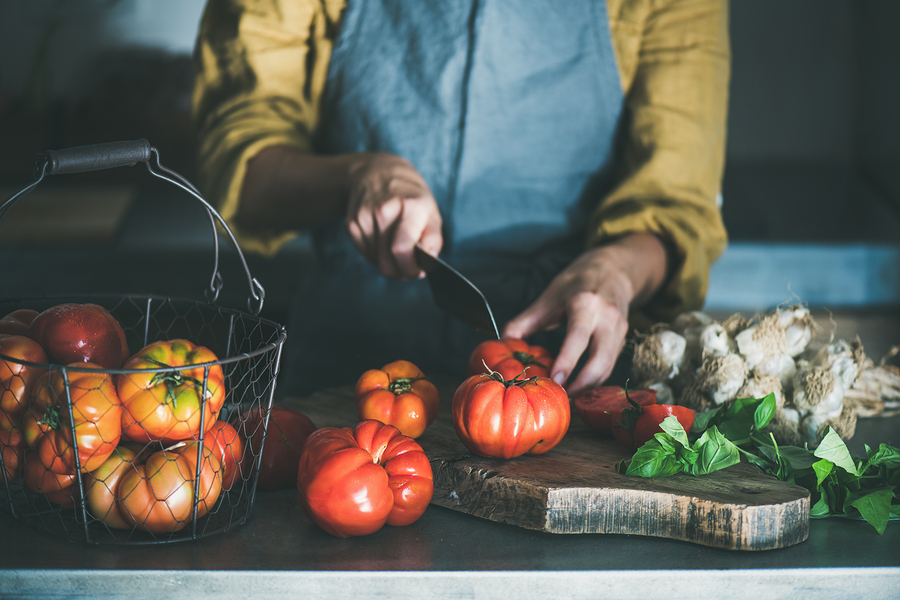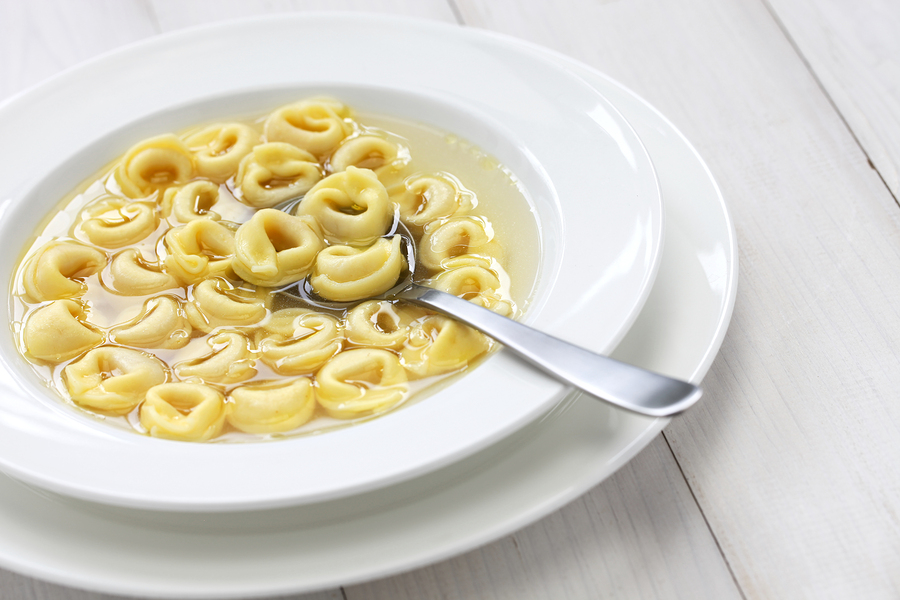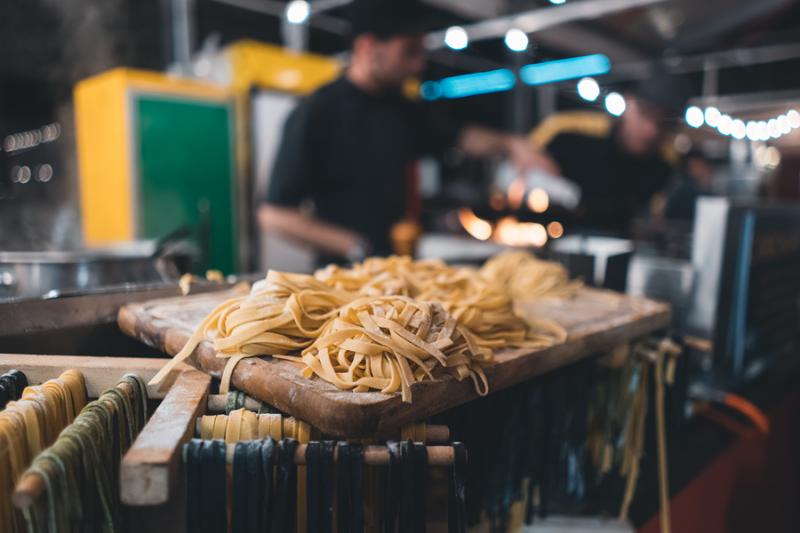Is there anything better? Pasta is cheap, versatile, easy to make, filling and delicious. While gnocchi and risotto have their place, pasta is the go-to primo piatto for Italians and non-Italians alike.
It’s also one of the easiest things to get wrong – or at least, to get inauthentic. Overcooked noodles with too-sweet sauces, overpowering flavors, underwhelming combinations… to name just a few problems.
It’s easy to get snobbish about Italian food, and that’s not what this is about. But if you want to cook your pasta in a way that would make even the most purist nonna’s mouth water, here are a few simple tips to get your dishes as authentic as possible.
Cook it right!
The first thing to get right is cooking the pasta itself.
A lot is said of the difference between pasta al dente and pasta cooked longer. To be truly Italian, al dente – literally meaning ‘to the tooth’, or with a bit of bite – is the only way to go. But how do you get it right?
As a simple rule of thumb, just take what it says on the packet – and subtract two minutes. Boil for 10 minutes, it says? Try eight. 12 minutes on the pack? Just do 10. This is a pretty reliable way to go for that perfect pasta.
There’s a caveat, of course – what about when there is a range? Some pasta packs say “10 to 12 minutes,” or something like that. What do you do then?
Here, the best thing to do is to start by cooking it for two minutes less than the lower end of the range – so in this case 10 minus two equals eight minutes – and then try it. Is it al dente and cooked? Great! Still needs a bit of time? Leave it in.
But then of course the question is how you know whether it’s right or not if you’re not an experienced pasta chef. There’s an easy trick. Take one piece of pasta out of the pan with a fork. Make sure you blow on it so you don’t burn your mouth! Take a bit out of half of the piece of pasta, or just a small bite if it’s long pasta like spaghetti. Then take a look at the bit that’s left.
Where you’ve bitten it – can you see a small white dot or line in the centre of the pasta? Then it still needs a little bit longer. If you’re pasta has a homogeneous color and consistency, it’s ready to go – get it out of the water and serve!
Awesome sauce
If you go to the supermarket, there are shelves and shelves of pre-made pasta sauces. Before going and spending a lot of money on a jar of Dolmio, why not try making it yourself?
Many of the sauces we’re used to buying are pretty simple to make and there are an abundance of recipes online. Bechamel sauce, for example, as used in lasagna and many pasta bakes, has just five ingredients, many of which you’re likely to have already: butter, flour, milk, a touch of grated nutmeg and a pinch of salt. It takes about 15 minutes to make.
The same goes for all manner of tomato and cheese sauces. Search out recipes and give them a go! Try to get guidance from blogs of Italian-based cooks, too. What we think of as bolognaise sauce or carbonara are often a far cry from the authentic dishes of the belpaese. It’s fun, you can make them in bulk and I guarantee they will be healthier than the supermarket brands, which are often full of sugar and artificial preservatives.
Here are some other saucy tips to make your pasta dishes extra special:
- Add a splash of water from the pasta pan into your sauce. The starch released from the pasta will help your sauce to cling to it, giving every mouthful some extra flavor.
- Use better ingredients and go easy on the herbs. Of course there are amazing herb-filled Italian sauces, but resist the temptation to throw heaps of oregano and basil into every one you make. Quality basics cooked with care, tasted and adjusted as you go along, burst with deliciousness.
- If you’re cooking with tomatoes, try adding a teaspoon of sugar to your sauce. It will take the edge off the natural sharpness and make for a rich and tasty dish.
- When it’s time to mix pasta and sauce, put a smear of sauce on the bottom of a dish, then a layer of pasta, then a ladleful of sauce, and so on. This will give you much more consistency through the dish than trying to just muddle it together with a spoon.
- Experiment! Once you’ve mastered your recipes, try some variations. A red sauce can be brought to life with a few chili flakes, while a glass of white wine in a creamy pasta dish can add depth and richness.

A match made in heaven
Different pasta shapes make for different visuals on your lovingly made dish. But they offer more than just a treat for the eyes.
Italians will always think about which pasta shapes best suit their sauces. For example, while we think of spaghetti bolognaise as a classic dish, in Italy they are very unlikely to match a ragu’ alla bolognese – their traditional version of bolognaise sauce – with spaghetti. Why would you use such a thin little strand of pasta with a rish and meaty dish? They are much more likely to serve it with flat, ribbon-like tagliatelle which will pick up the goodness as you wrap it around your fork.
here are no hard and fast rules on which pastas go with which sauces, but here are some good principles to bear in mind:
spaghetti all’aglio, olio e peperoncino – spaghetti with garlic, oil and chili flakes. Remember that for Italians pasta is traditionally a first course, so even if there is not much to the dish it doesn’t matter – there will be more to follow! - Meaty or similarly substantial sauces go great with pasta that has big holes or indents that can pick up the pieces. Orecchiette (little ears), for example, are great for cupping a sausage meat sauce.
- Flat pasta and pasta with smaller holes – like penne or bucatelli – are perfect for thick, rich sauces. Think heavy cream, cheese or rich tomato. Stir it round and let those holes suck in the goodness.
- Filled pastas like ravioli and tortellini tend to need a simple dressing, as you don’t want to overpower the flavour of the filling. Try a basic red sauce of tomato passata, garlic and olive oil, make a thin broth for tortellini in brodo, or simply melt some butter and toss it together with grated parmesan. What could be better?
Semplicissimo!
Next time you make some pasta, try putting some of this advice into practice! It’s not too complicated – just think about each step in turn: the perfect pasta, the sumptuous sauce and the ideal combination.













